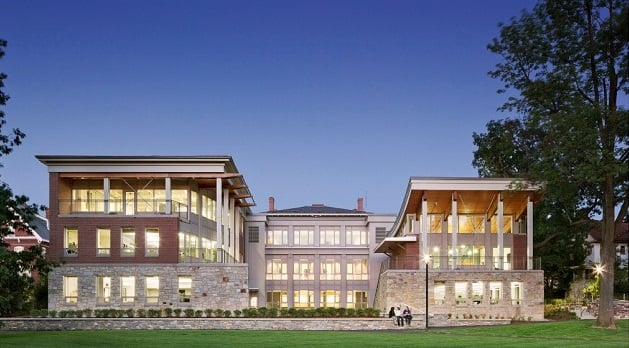The Vermont Green Building Network (VGBN), the Vermont Chapter of the U.S. Green Building Council (USGBC), recently decided to offer an award to recognize sustainable buildings in Vermont. As a VGBN Board Member, I reached out to peers during the award development process and heard a common theme – we need to recognize buildings that have proven energy performance. People stressed this approach because the owners who are hiring architects, engineers and other consultants often can’t tell which ones have the unique expertise and skills that will result in truly high performance buildings. Many owners perceive all professionals who submit proposals as qualified and they use price as the means for selection.
Proven Energy Performance
By highlighting buildings with proven energy performance, VGBN will help to draw attention to design and construction teams that are actually achieving what they claim. Buildings that use less than 30% of the energy used in the typical building in the Northeast will be recognized as Vermont’s Greener buildings and the lowest energy use within that group will be honored as Vermont’s Greenest Building.
Buildings that use less than a third of the typical building energy consumption are more resilient. If there is a power outage these buildings take longer to cool down in the winter and to overheat in the summer. They have a lower impact on the power peaks that drive energy prices up and, during heat waves, threaten the viability of our aging electric infrastructure.
Calculating Energy Intensity
In order to define energy use in a way that enables us to compare buildings we use the building annual energy intensity which is typically calculated in kBtu/sf/year.
- kBtu is 1,000 British Thermal Units. In order to get an idea of how much that is the amount of energy used by a 100 Watt light fixture burning for ten hours (1 kWh) is 3.4 kBtus.
- Sf – is the building square footage
- Year is the operating period of 8,760 hours
In order to obtain the building energy intensity the energy use of electricity, fossil fuels and renewables are all converted to kBtu units and added for the year. That number is divided by the building square footage to obtain the building energy intensity. The Energy Star™ Portfolio Manager performs this task for commercial buildings.
Setting a Standard for Comparison
In addition to providing a stage for teams that have designed and built truly high performance buildings, the awards were designed to raise awareness of the "miles per gallon" being achieved in people’s homes and offices. If your office uses 50 kBtu/sf/year, do you know if that is good, bad or ok? Most people have no idea. In fact this is about half the energy intensity of the average commercial building in the Northeast. Commercial buildings that use 30 kBtu/sf/year or less are solid performers.
A Net Zero Future
As awareness of achievable building energy performance is raised through the Vermont’s Greenest Building Award, VGBN expects energy intensity to increasingly enter the common lexicon, contributing to a culture of energy efficiency and increasing the societal focus on achieving resilient building designs that minimize waste, provide excellent comfort and air quality while operating at net zero kBtu/sf/year. Net zero means that the building generates at least as much energy via on-site sustainable power production (solar electric and hot water, biomass, wind) and energy recovery as it consumes.





